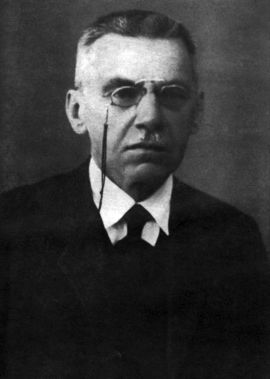Wipper Robert (1859–1954) – historian, religious historian. Member of the Ac. of Sc. of the U.S.S.R. from September 27, 1943.
In 1880, he graduated from the Historical and Philological Faculty of the Moscow University, where his supervisors were V. I. Guerrier and V. O. Kliuchevsky. In 1894, he defended his thesis ‘Church and State in Geneva of the Sixteenth Century in the Calvinist Epoch’. He got a position at the Chair of World History at the Novorrossiisk University in Odessa. From 1897 till 1922, he made lectures at the Moscow University; since 1910 he was State Councilor. He emigrated to Latvia, where in 1924-1941, he made lectures at the Latvian University in Riga. In 1941, W. became Professor of the Moscow Institute of Philosophy, Literature and History; in 1941-1950, he worked at the Moscow State University (in 1941–1943, he also made lectures at the Middle Asian State University in Tashkent).
In his early works, W. put a special attention to the Reformation. He noted ‘legendary’ images of Calvin and Geneva, but did not set a task to dismantle such myths. Because the central problem of his research was relations between Church and State in Geneva of the sixteenth century, he analyzed the order of life established under Calvin. Later, W. actively worked out the mythological theory of the origin of Christianity, rejecting the historical being of Jesus Christ. He traced the origin of Christian literature back to the second half of the second century CE. On the base of analyses of literary devices and style, W. tried to demonstrate contradictions, inconsistency and even interpolations and falsifications in the texts. The very name of ‘Christians’ appeared – on the opinion of W., who based on its Latin form – not earlier than in the early second century CE. He rejected the traditional scheme of the origin of Christianity: at first – the ‘pure’, initial doctrine of the wise founder, later a number of deviations, shaping heresies of Gnostics, Montanists etc. He gave a vast characteristics of numerous fighting religious movements of the years of 130-s – 140-s (Gnostics, Marcionists, Montanists etc.), and described how their peculiarities turned into elements of the whole corpus of the canonic books of the New Testament.

